Via Catherine Smyth
Get Started for FREE
Sign up with Facebook Sign up with X
I don't have a Facebook or a X account


|
Controversial issues in the classroom
How do young children make sense of current events and controversial issues? This site provides resources, strategies and ideas for dealing with topics such as racism or refugees in a positive way to promote values and develop understanding.Teachers play an important role in promoting values such as respect, fairness, participation, cooperation, integrity and care, not only in the way they teach but also in what they teach. Curated by Catherine Smyth |
 Your new post is loading...
Your new post is loading...

|
Scooped by
Catherine Smyth
February 27, 2020 10:37 PM
|
The circulation of misinformation makes understanding the world difficult. Here are three ways you can help children to think critically about the news they see, hear and read.

|
Scooped by
Catherine Smyth
March 26, 2019 12:35 AM
|
After a national trauma, creative arts offer us a "bridge towards possibility" both individually and collectively, says Auckland University professor Peter O'Connor, who teaches theatre in schools, prisons, psychiatric hospitals and disaster zones.
Finding ways to help children deal with traumatic and stressful situations # Professor Peter O'Connor #edchat #arts

|
Scooped by
Catherine Smyth
September 23, 2014 9:57 PM
|
Before we make our minds up about asylum seekers in Australia, we need to dig a little deeper. Take a Road to Refuge journey and challenge yourself – what would you do if you were in the shoes of a refugee?
Information and resources for understanding and teaching about refugees.

|
Scooped by
Catherine Smyth
August 15, 2013 8:46 PM
|
The Controversial Issues Policy (NSW Department of Education and Communities) provides directions for the management of controversial issues in the classroom.
- Schools are neutral grounds for rational discourse and objective study. They are not arenas for opposing political views or ideologies.
- Discussion of controversial issues is acceptable only when it clearly serves the educative purpose and is consistent with curriculum objectives. Such discussion is not intended to advance the interest of any group, political or otherwise.
The Controversial Issues Policy (NSW Department of Education and Communities) provides directions for the management of controversial issues in the classroom.
Schools are neutral grounds for rational discourse and objective study. They are not arenas for opposing political views or ideologies.Discussion of controversial issues is acceptable only when it clearly serves the educative purpose and is consistent with curriculum objectives. Such discussion is not intended to advance the interest of any group, political or otherwise.

|
Scooped by
Catherine Smyth
September 12, 2014 2:45 AM
|
The GA supports primary and secondary geography teachers through teaching resources, geography journals, CPD events, Barnaby Bear, Worldwise and more.

|
Scooped by
Catherine Smyth
October 7, 2014 11:10 PM
|
This film explains what values are, how people learn them, and what actions tell about values. An example is given of method, outlined on the screen, for mak...
This fairly old video clip explains what values are.

|
Scooped by
Catherine Smyth
September 22, 2014 3:16 AM
|
In collaboration with the ABC's Behind the News, UNICEF Australia Young Ambassadors are asking children across the country what matters to you.

|
Scooped by
Catherine Smyth
September 22, 2014 3:16 AM
|
Behind the News is a high-energy, fun way for upper primary and secondary students to learn about current issues and events in their world.

|
Rescooped by
Catherine Smyth
from HSIE K-6
July 31, 2013 9:44 PM
|

Teachers can access videos, cross-curriculum learning modules, forums and other resources that are linked to the Australian Curriculum. These resources are appropriate for Years 3-10.


|
Scooped by
Catherine Smyth
July 21, 2014 1:15 AM
|
A WOMAN has been filmed dishing out a racist rant on a peak hour train.
Using current issues or events to teach HSIE K-6.

|
Rescooped by
Catherine Smyth
from HSIE K-6
March 25, 2014 9:57 PM
|
Use thinking strategies such as DeBono's Six Thinking Hats to investigate and analyse controversial issues in the classroom.

Great approach!! Must to adapt for decision making in corporate life as well as day-to-day life!! I recommend this to all!!

|
Rescooped by
Catherine Smyth
from Primary history
January 23, 2014 8:16 PM
|
Most Australians celebrate Australia Day as the day Australia was founded.
In contrast, Aboriginal people mourn their history and call it ‘Invasion Day’.
Australia Day (January 26) is a significant event in the nation's calendar but not everyone agrees on what the day represents. For some Australians, Australia Day is about national identity or national values. For others, Australia Day represents something different. This website offers an Aboriginal perspective on Australia Day.I am interested in how teachers can deal with an issue or a topic that may be controversial in the community.
The researchers, Barton & Levstik, argue that conflict is fundamental to democracy and that teachers should be honest with their students about both the conflict and consensus surrounding an event or an issue. Rather than closing down discussion or differences of opinion, they suggest that teachers should prepare their students for a reasoned discussion about an issue. Teachers should carefully plan and scaffold the discussion about a contentious issue.
The following scaffold uses some of ideas and research findings of Barton & Levstk (2005) in Doing History. Using these ideas, teachers can plan a discussion about Australia Day or any other current event:
1. Pose an inquiry question e.g. "What is Australia Day?", "How has Australia Day changed?". As a class, come up with additional questions.
2. Prepare primary and secondary sources related to the topic (e.g. Babakiueria DVD, newspaper articles, cartoons, songs, photographs, diary entries, historical narratives etc;)
3. Do some background research. Present facts and knowledge (e.g. dates, places, people). Use a graphic organiser to organise information. For example, use a T Chart, Venn Diagram, Retrieval Chart. (Check out the free downloadable templates on Global Education http://www.globaleducation.edu.au/1840.html).
5. Provide opportuntities for small group background work around different aspects of the topic. Gather information about different perspectives about the topic.
6. Provide time for students to form a tentative position. Students can write a positional statement using evidence they have found.
7. Allow time to discuss and think.

Through the meaning implied in Aboriginal celebration of Survival Day, the page introduces Aboriginal perspective about the contemporary issue existing in Australia. When Australian people are celebrating Australian Day, many Aboriginal people found there is little to celebrate with the same meaning; rather, they celebrate Survival Day that implies their commemoration of a deep loss_ the loss of their rights to their land, loss of family, loss of the right to practice their culture. The source also includes Aboriginal participation by representing difference voices of Aboriginal people about the issue. The site also emphasises the account of Aboriginal and non-Aboriginal history by introducing the emerging thinking in some Australians about the concept of “Arrival Day” celebration in which both Indigenous and Australian history are praised and promoted.
The source provides teachers with a different perspective from which they can design teaching activities that promote students developing different viewpoints. This is a useful resource for teachers not only in term of obtaining information to teach the concept and the origin of Australia Day, but also in term of teaching the story implied in the event viewed from an Aboriginal point of view. By applying the idea of this resource into teaching, teachers would be able to raise students’ awareness of the diversity that has been existed since the foundation of the country in which they are living, and advise them the existing discrimination that they should avoid. When carry on any teaching activities that requires students to collect data about the event from different perspective, it is crucial for teachers to provide enough guidance to students in order to avoid encountering sensitivity and offensiveness.
Through poetry, song and stories, this page offers Aboriginal perspectives on Australia day. After several lessons spent discussing what Australia Day means to different people, this resource asks students to think deeper about the day and its significance for Aboriginal people.
Many Aboriginal people call January 26 Invasion Day or Survival Day. Why is that? To clarify their thoughts, students could complete a fishbone diagram (Global Education, 2014). Global Education suggest labeling the scales with “how, why, when, where and what” (2014). For example, ‘HOW does this person feel? WHY do they feel this way? WHAT does this make me feel?’
Students could expand their individual ideas in an independent assessment task, looking at the Creative Spirits site. Students could choose to present their findings in a variety of ways, for example as a poem about how a particular story made them feel to be read at assembly (inspired by a project at Coffs Harbour Public School), a report for the class blog, or an educational poster to display in the school to raise awareness.
REFERENCES:
Global Education. (2014). Retrieved 31 March, 2015 from http://globaleducation.edu.au/verve/_resources/fishbone.pdf
Coffs Harbour Public School (2015). Retrieved 31 March, 2015 from http://coffsharbourpublicschool.edublogs.org/2014/03/20/august-6th-1945-nagasaki-and-hiroshima-bombings-by-6h/#more-5160

Description of what is on this site:
This resource explains the HSIE outcome at CCS2.2 in relation to what has become known as Australia Day but is mourned as Invasion Day by many Aboriginal people.
This is done by looking at Australia Day over time and from the perspective of different Aboriginal people and the impacts the arrival of the British had on their family members/ancestors and on them personally.
This is a good follow-on resource from First Australians, Episode 1, since it gives the perspectives of people of today on the events which happened in 1788 and their impacts now.
A teaching idea and link to relevant pedagogical research:
Working in groups, students could be asked to look at the changes in the community and family life and impacts of these due to the arrival of the British, January 26, 1788 and to create a timeline of events which caused these changes or resulted from them, including quotes from different Aboriginal people.
The students could be told that this task would be assessed and students asked to help devise a rubric for assessing this outcome since "...learning is best achieved when students are actively involved in the teaching and learning process." (Bobis, Mulligan, & Lowrie, 2013, p. 291). This lessons learning would be assessed formatively.
A literacy strategy/link to English KLA:
Again, this task would also be fulfilling outcomes in the NSW English Syllabus for the Australian Curriculum such as:
EN2-6B 'distinguishes between different forms of English' and 'identifies organisational patterns and features' and 'listen to and contribute to conversations and discussions to share information and ideas'.
References:
Bobis, J.,Mulligan, J., & Lowrie, T. (2013). Mathematics for Children: Challenging children to think mathematically. Frenchs Forest: Pearson Australia.
Creative Spirits, Jens Korff (2014). Australia Day – Invasion Day. Retrieved April 20, 2015, from http://www.creativespirits.info/aboriginalculture/history/australia-day-invasion-day#toc0

|
Scooped by
Catherine Smyth
August 15, 2013 8:45 PM
|
This Bok Center Online Document lists evaluation
forms that faculty members can use in their courses.
This online paper explores how difficult encounters in the classroom can be used for teaching and learning.

|
Scooped by
Catherine Smyth
August 1, 2013 10:33 PM
|
Resources for dealing with a range of global issues in the classroom.

|
Rescooped by
Catherine Smyth
from HSIE K-6
August 10, 2014 11:14 PM
|

The Kinship Module project is a pilot online education program that promotes Aboriginal cultural education at a university level.
By undertaking the module you will gain a greater understanding of and insight into:
experience of Aboriginal Kinship systems and how they operateAboriginal social structures and how these differ from Western societieshow cultural assessment assists in understanding these impactspotential conflict in working with people from differing cultural backgroundshow cultural difference impacts upon Aboriginal people in the social systems which operate in Australia, such as: through education, criminal justice systems and the legal system more broadly.
A useful tool to support the online module is the suite of narratives from Aboriginal people. These narratives explore cultural and service issues that are relevant to student, teachers and others who work to support Aboriginal communities.
The narratives also provide additional and more in-depth information on cultural identity, the impacts of cross-cultural differences, and issues of importance for Aboriginal people when working in a number of service areas, such as education, social welfare, law and health.

|
Rescooped by
Catherine Smyth
from HSIE K-6
July 31, 2013 9:49 PM
|
Immigration Nation...Explore the stories and lives of dozens of remarkable immigrants -- and their descendants -- in this immersive interactive documentary about the building of multicultural Australia.
Via Maree Whiteley, Catherine Smyth


|
Rescooped by
Catherine Smyth
from HSIE K-6
July 31, 2013 9:50 PM
|
Learn about the world by changing the familiar map. Select a subject from the top menu and watch the map resize. A country's total area no longer represents land mass, but items relevant to the subject (for example, religion, education, health).

|
Rescooped by
Catherine Smyth
from HSIE K-6
July 31, 2013 9:48 PM
|
Values for Australian Schooling resource series of curriculum and professional learning resources, funded by the Australian Government and developed specifically for the Values Education Program.

|
Rescooped by
Catherine Smyth
from HSIE K-6
July 31, 2013 9:48 PM
|
An innovative human rights curriculum developed by Community Languages Australia.

|
Rescooped by
Catherine Smyth
from HSIE K-6
July 31, 2013 9:47 PM
|
Face the Facts draws on primary research information from a range of sources. This site contains information about indigenous peoples, migrants, refugees and asylum seekers.

|
Rescooped by
Catherine Smyth
from HSIE K-6
July 31, 2013 9:46 PM
|
Anti-prejudice activites for years K-3...

|
Rescooped by
Catherine Smyth
from HSIE K-6
July 31, 2013 9:46 PM
|
An interactive game which lets you experience what it is like to be a refugee.






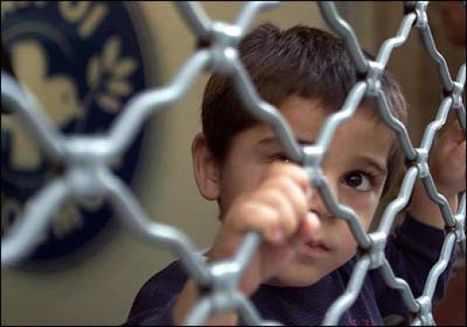



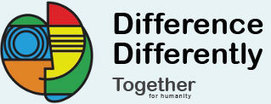


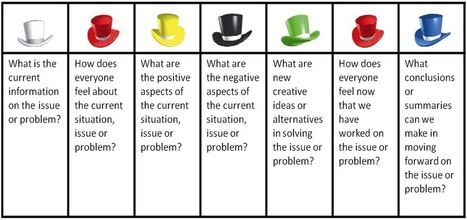

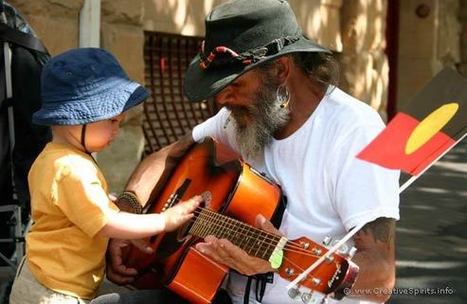






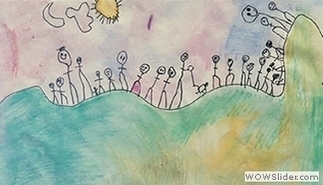






How do YOU address controversial issues (such as racism) in the classroom? This list is a fabulous starting point and can be adapted to suit different student year levels...Thanks to @SmythCatherine.
How do YOU address controversial issues (such as racism) in the classroom? This list is a fabulous starting point and can be adapted to suit different student year levels...Thanks to @SmythCatherine.